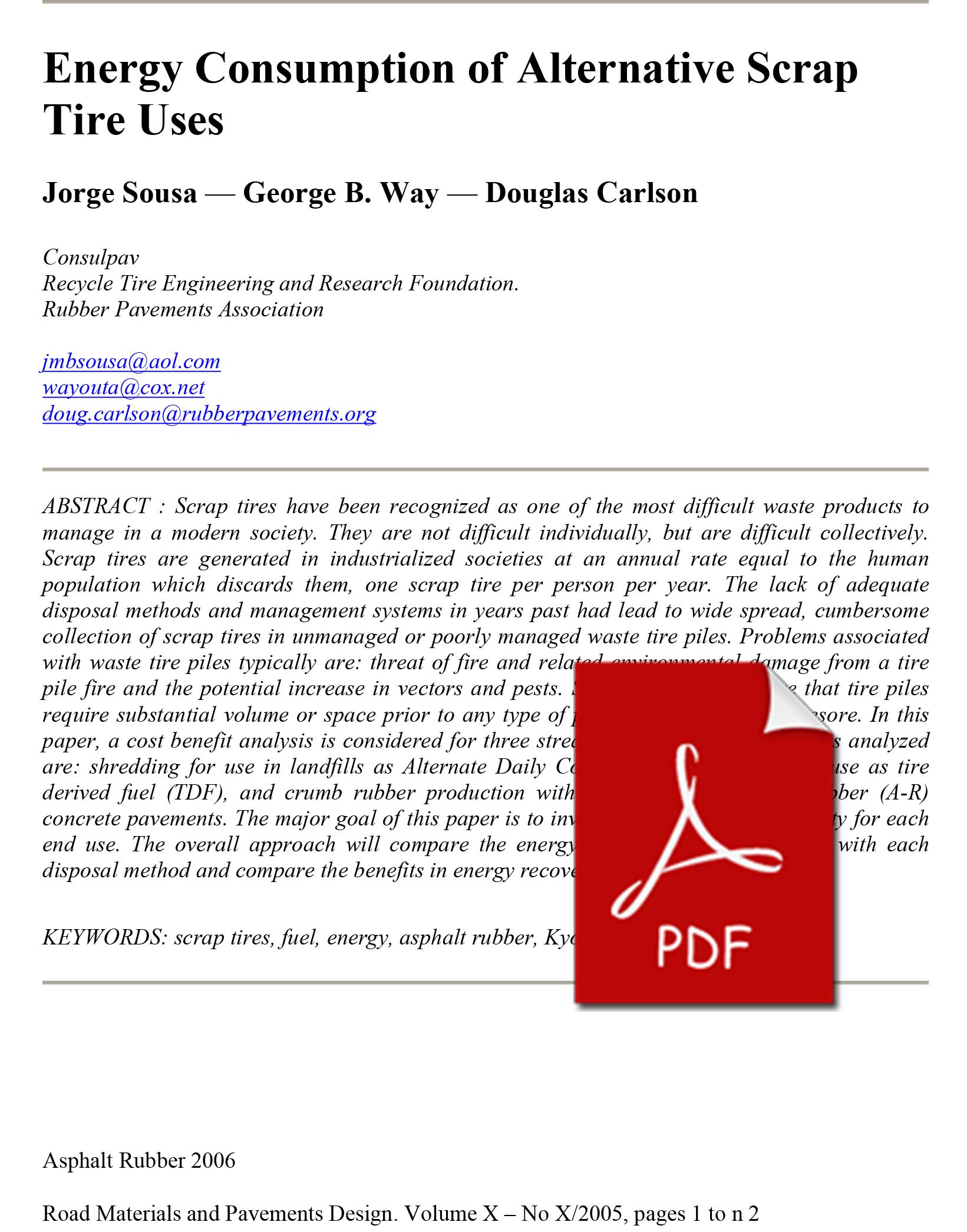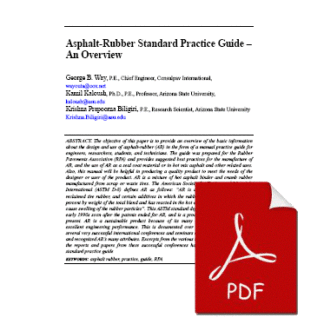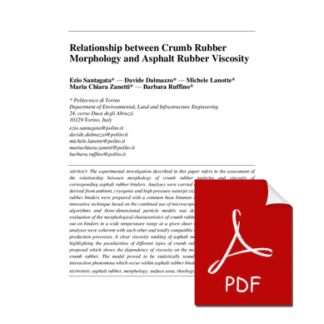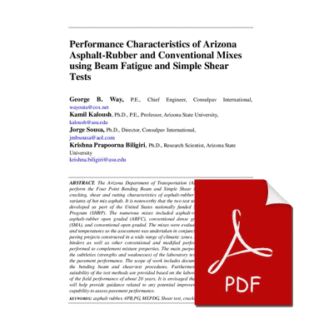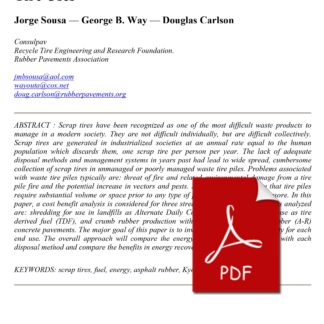Description
Scrap tires have been recognized as one of the most difficult waste products to manage in a modern society. They are not difficult individually, but are difficult collectively. Scrap tires are generated in industrialized societies at an annual rate equal to the human population which discards them, one scrap tire per person per year. The lack of adequate disposal methods and management systems in years past had lead to wide spread, cumbersome
collection of scrap tires in unmanaged or poorly managed waste tire piles. Problems associated with waste tire piles typically are: threat of fire and related environmental damage from a tire pile fire and the potential increase in vectors and pests. Secondary problems are that tire piles require substantial volume or space prior to any type of processing and are an eyesore. In this paper, a cost benefit analysis is considered for three streams (end uses). The end uses analyzed are: shredding for use in landfills as Alternate Daily Cover (ADC), shredding for use as tire
derived fuel (TDF), and crumb rubber production with an end use in asphalt-rubber (A-R) concrete pavements. The major goal of this paper is to investigate the benefit to Society for each end use. The overall approach will compare the energy costs in BTUs associated with each disposal method and compare the benefits in energy recovery (if any) for each process.

